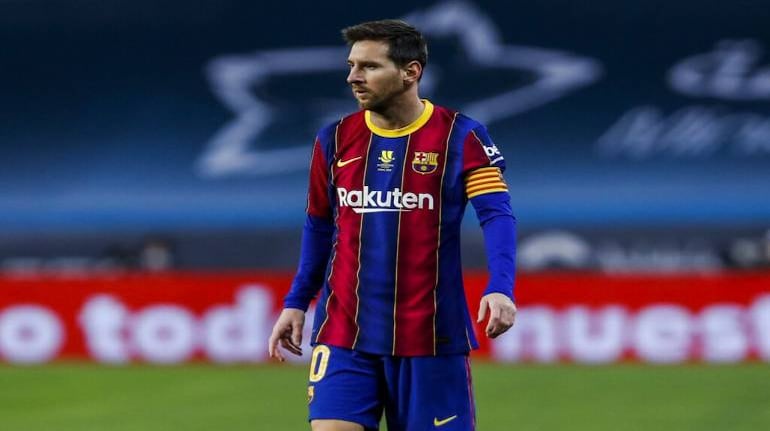



The beautiful game is in serious trouble.
Across the world, football clubs are looking financially vulnerable. According to a report in the Indian Express, Parth Jindal the owner of Bengaluru FC which plays in the Indian Super League (ISL) has said that the future of the club, which won the ISL in 2016-17, and before that the I-League twice, is in peril as it battles mounting losses. Nor is the pandemic solely responsible for this. The club has been losing ₹25 crore every season with losses in the current season which is being played to empty stadiums, likely to be considerably higher.
India is, of course, the boondocks of the footballing universe with the country’s national team ranked a lowly 104 in the world and its various clubs rarely making an impression in the AFC Champions League, the continent’s premier club football competition.
But the financial crisis seems to have hit even the game’s elite. In Europe, Barcelona, with Lionel Messi in its ranks, is reported to be on verge of bankruptcy with Euro 1.1 billion of debt on its books, of which Euro 700 million is due for repayment almost immediately. Some years ago, AC Milan, another of the giants of global football with seven Champions League titles to its credit, faced imminent collapse before being bailed out by American hedge fund Elliott Management Corporation.
Strangely, Barcelona and Bengaluru FC (as well as other Indian clubs) have the same root cause for their financial woes — soaring player salaries. Spanish publication El Mundo which broke the story about the threat to Barcelona, highlighted the fact that 74 percent of the club’s substantial Euro 855 million in revenues go to pay players’ wages. While Indian players aren’t in the same league, they too are their clubs’ main head of expenditure.
According to the website transfermt.co.in, the highest-paid stars in the ISL this year, foreigners all, are the 33-year old Gary Hooper who earns Rs 6.66 crore playing for Kerala Blasters FC and Mumbai City FC’s 34-year old Adam Le Fondre along with NorthEast United FC’s Idrissa Sylla both of whom will take home Rs 5.8 crore each.
Of course, those figures pale in comparison with what these players earned in their prime. Hooper, for instance, had a peak market value of Rs 50 crore in 2013 when playing for Norwich City. That same year, Fondre earned Rs 33 crore playing for Reading FC. Those numbers though, were achieved in the cash-rich Premier League and the Championship which are valued in billions of dollars. The ISL, by contrast, is valued at $58 million. For comparison, the Persian Gulf Pro League, Iran’s highest division for professional football, has a total market value of $109 million.
That number places in perspective the limitations of the major Indian clubs with limited revenue opportunities. Data from the Ministry of Corporate Affairs shows that most ISL clubs have consistently reported annual losses averaging around Rs 30 crore in the first four years of the league.
In fact, the last 10 years have been particularly harsh to them with even the top names in the country — ATK Mohun Bagan and SC East Bengal hitting financial rock bottom and needing bailouts to survive. At least they were lucky. Others such as Mumbai FC and JCT Mills simply folded. That’s because most Indian clubs are dependent on support from corporate houses and a decline in the fortunes of their patrons spells doom for them.
Thus, FC Pune City found itself in a limbo after the Dewan Housing Finance Corporation Ltd. (DHFL) crisis led to the exit of the Wadhawan Group, its principal backer. Mohun Bagan and East Bengal’s troubles started after the UB Group which was sponsoring both, went into a nosedive.
It is a strange paradox that a game played by millions and loved by billions, is in such dire straits across the world.
Ten years ago, the UEFA pushed through the Financial Fair Play (FFP) regulations in response to the growing losses of major clubs. The objective was to instil some degree of financial discipline such that their long-term survival wasn’t threatened by massive spends largely on buying players who can be a draw at the turnstiles. As former UEFA President Michel Platini said on the eve of the announcement of the new regulation in 2011-12, “50% of the clubs are losing money and this is an increasing trend. We needed to stop this downward spiral. They have spent more than they have earned in the past and haven't paid their debts.”
Sadly, the new regulations have done little to stanch the sea of red which is threatening to engulf football. Time for some serious introspection from the big clubs.
Discover the latest Business News, Sensex, and Nifty updates. Obtain Personal Finance insights, tax queries, and expert opinions on Moneycontrol or download the Moneycontrol App to stay updated!
Find the best of Al News in one place, specially curated for you every weekend.
Stay on top of the latest tech trends and biggest startup news.